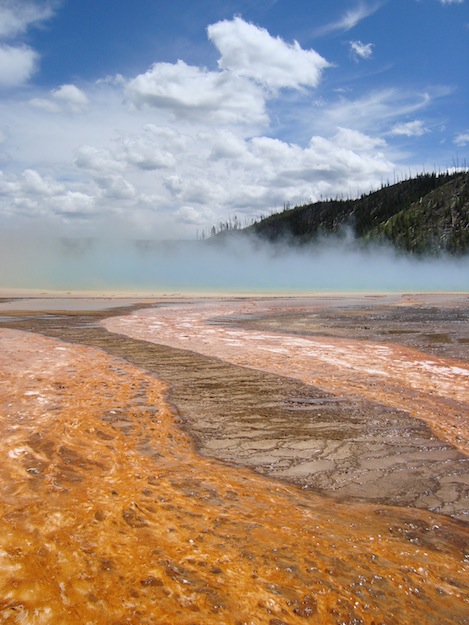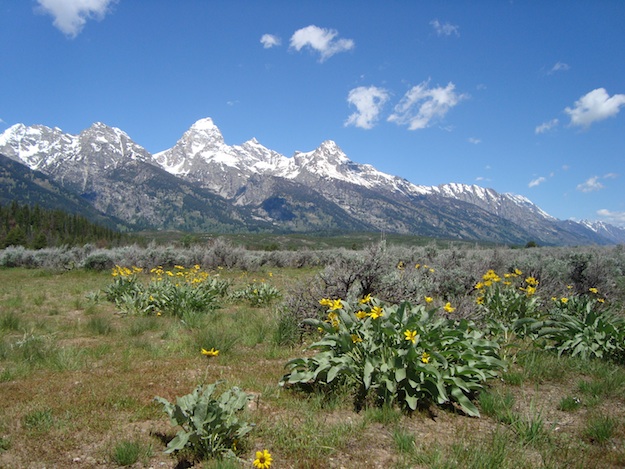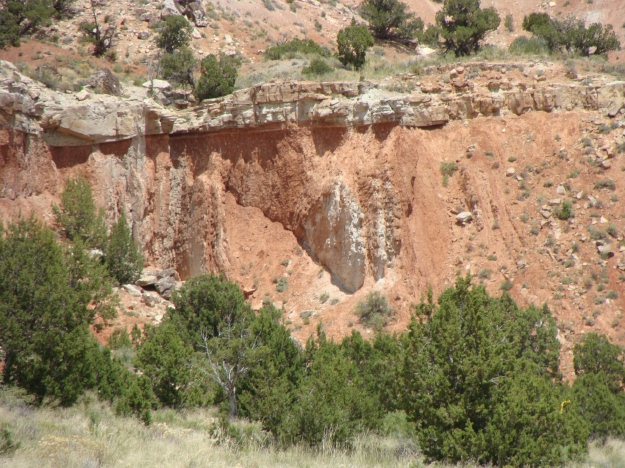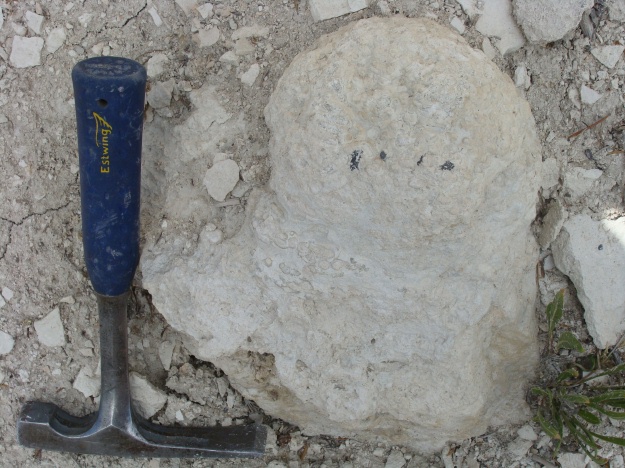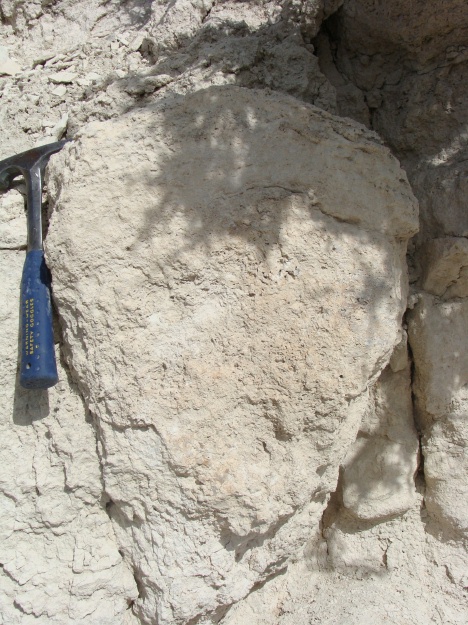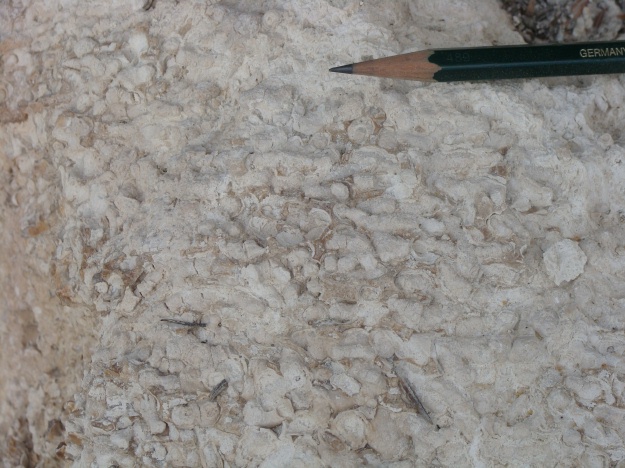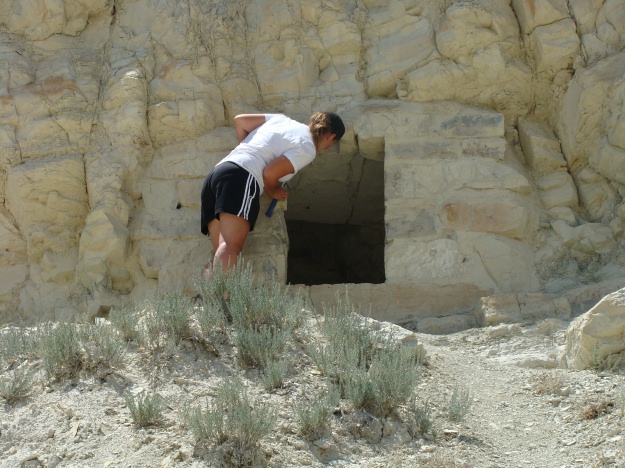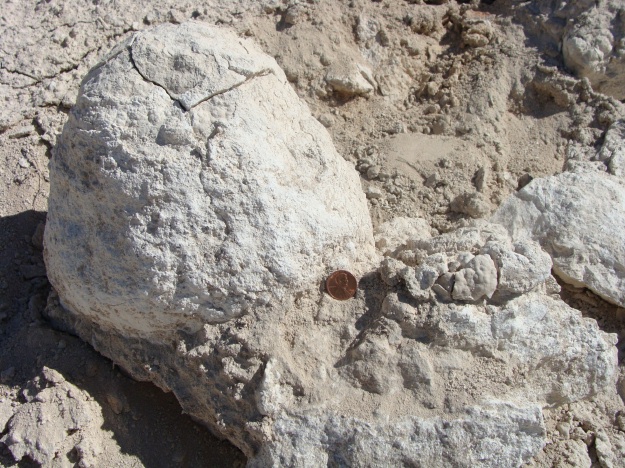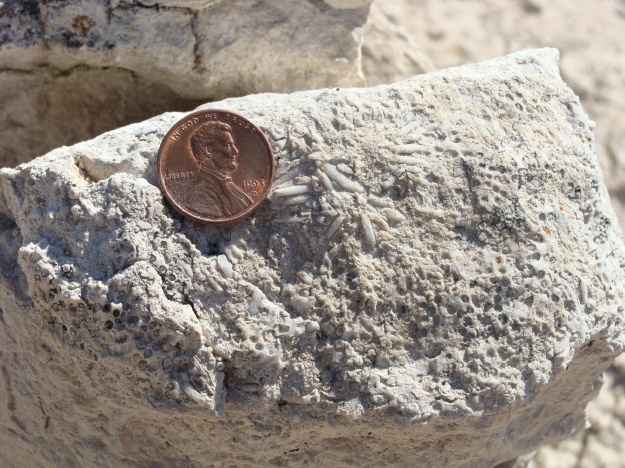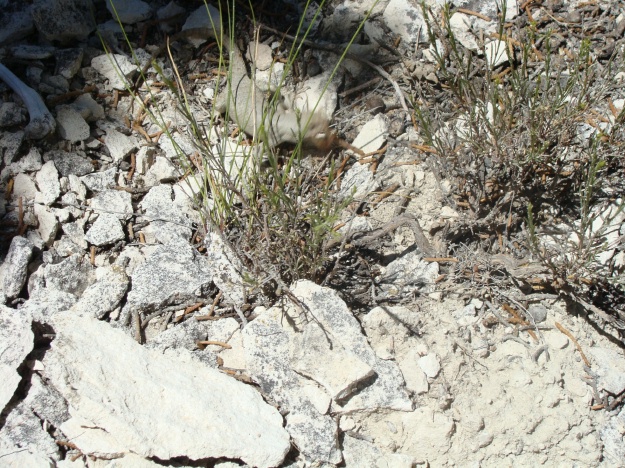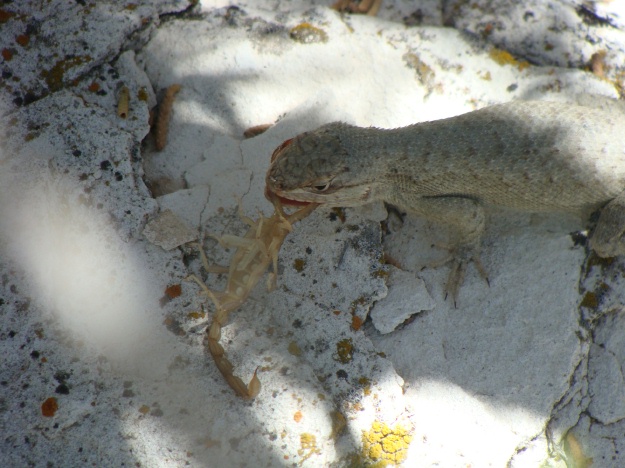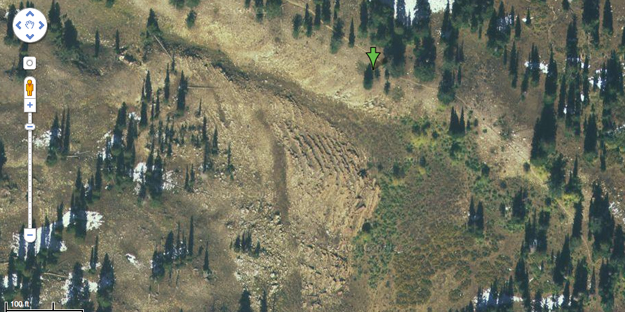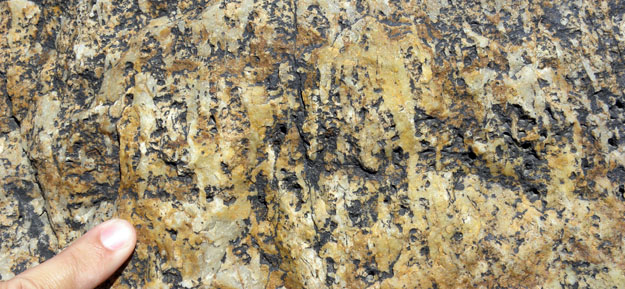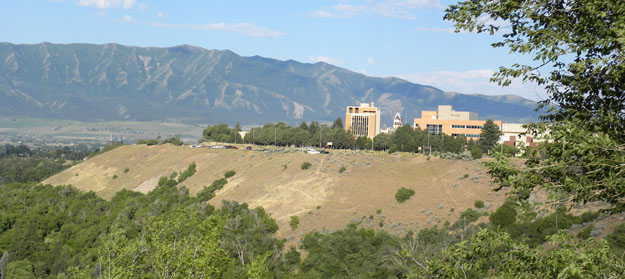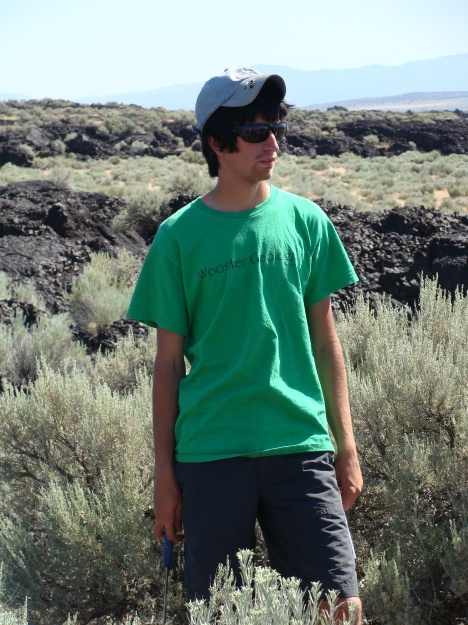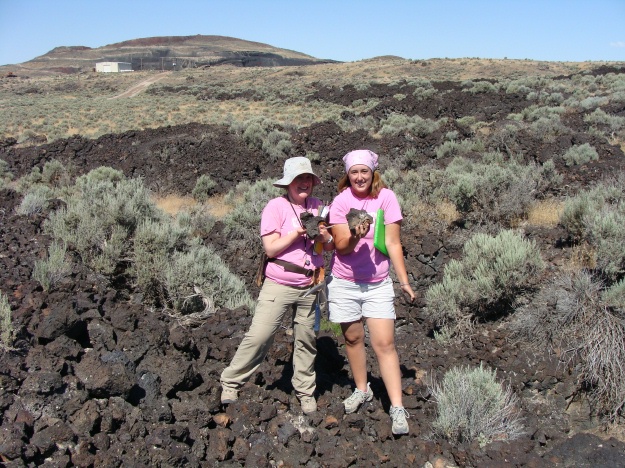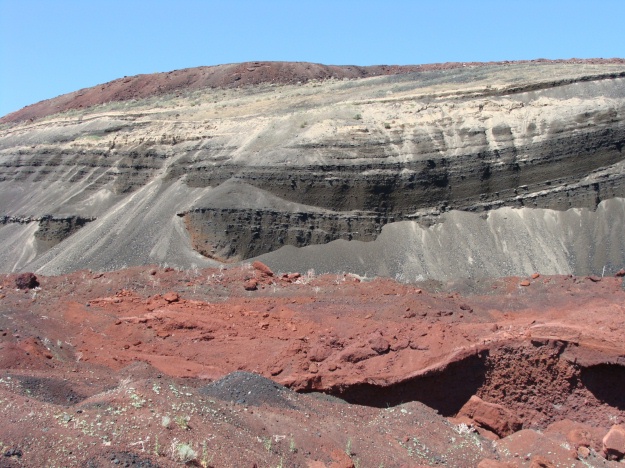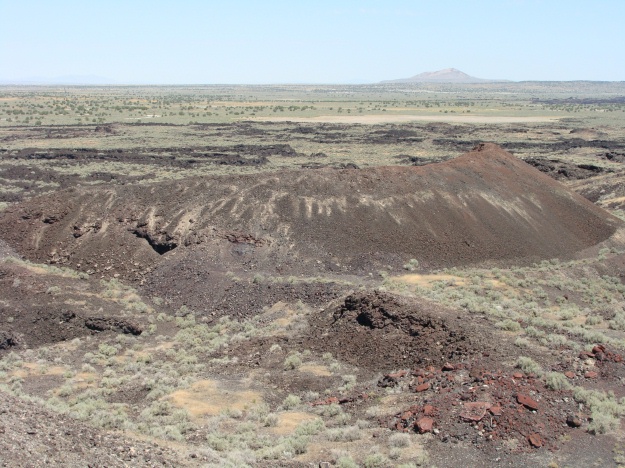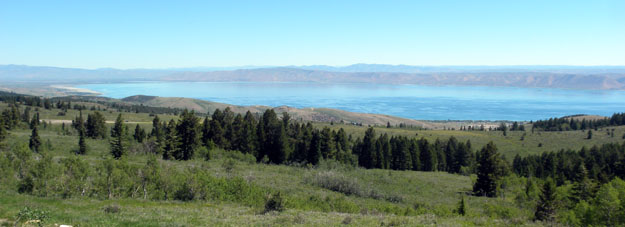Guest Blogger: Elizabeth Deering
This summer I have been given many amazing opportunities starting with my employment at the Wyoming Dinosaur Center in Thermopolis, Wyoming. Since late May I have been working with 7 other summer staff members giving tours, working in the prep-lab, and excavating Camarasaurus and Allosaurus bones. Excavating bones is a lot different than what you see in the movies and its definitely not as easy, but it is still a lot of fun. We use dustpans, brooms, oyster knifes, and occasionally hammers and chisels to excavate the bones, but before we can remove them we have to take many measurements and GPS coordinates so we can map the bones for further study. This summer we have found many vertebrae, teeth, and even some cranial material! One of the coolest finds was discovered on accident when a staff member broke an Allosaurus humerus in half with a chisel. The inside of the humerus was hollow and had been replaced with an unidentified mineral, making it look like a geode. It was a very unique find for the center.
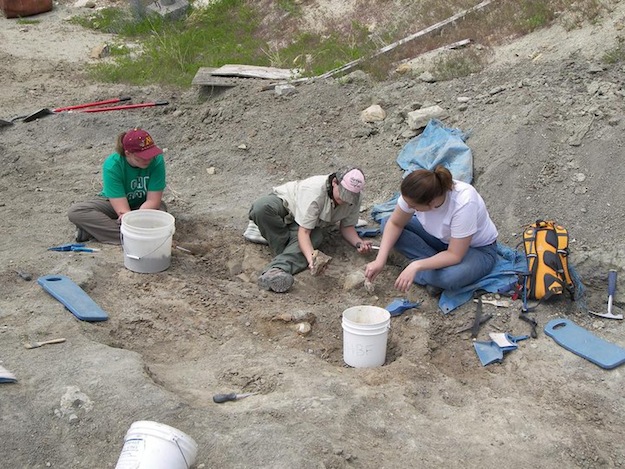
Two summer staff members and myself working on excavating a Camarasaurus at the BS (Beside Sauropod) quarry at the Wyoming Dinosaur Center.
Thermopolis is only a few hours from both Yellowstone National Park and Grand Teton National Park, so my roommates and I have taken advantage of our location and made a few weekend trips to both parks. They are both amazing! Yellowstone is unique because of the drastic changes in landscape that you encounter while driving through the park. In places it can be very wooded and have an alpine feeling, while in other places it can be very desolate and have lots of geothermal activity. Personally, I liked the more desolate landscape of Yellowstone. It was amazing to see things like geysers, paint-pots, and mineral springs. The Tetons were also incredible. They are younger mountains, so they have less erosion and are more jagged than other mountains. There is absolutely breathtaking scenery in the Tetons and many fun activities as well. If you ever find yourself in Wyoming I recommend seeing both parks.
Right now I am in Ephraim, Utah, with Dr. Judge and Jesse Davenport working on my Senior I.S. on stromatolites in the Green River Formation. This past week we have worked hard in the hot sun collecting samples and making strat columns. We have gathered a lot of great samples and lots of important information to include in my paper, but we have had a lot of fun too! I am here in Utah until Tuesday and then I fly back to Thermopolis to finish up the summer.



